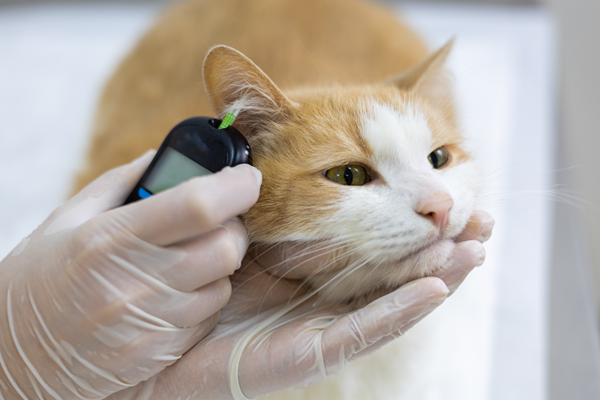
Feline diabetes, also known as diabetes mellitus, is a common condition that affects many cats, especially as they age. It requires careful management to ensure a good quality of life for your furry friend. Here’s a guide to understanding the condition, recognizing the signs, and helping your cat live with diabetes.
What Is Feline Diabetes?
Diabetes in cats is a condition where their bodies either fail to produce enough insulin or cannot use insulin properly. Insulin is a hormone that helps regulate blood sugar levels, and without it, sugar builds up in the blood instead of being used for energy.
Most diabetic cats suffer from type II diabetes, which involves both insulin resistance and decreased insulin production.
Obesity, age, and inactivity are risk factors. If left untreated, diabetes can lead to severe, life-threatening conditions like ketoacidosis.
Common Clinical Signs
Cats with diabetes often show symptoms that owners might notice at home:
- Increased thirst and urination: High blood sugar causes excessive glucose in the urine, pulling water with it.
- Weight loss despite a good appetite: The body breaks down fat and muscle for energy because it cannot access glucose.
- Lethargy and weakness: Low energy levels may affect activity.
- Plantigrade stance: Some cats walk with their hind legs flat on the ground, indicating nerve damage.
If you notice these symptoms, schedule a vet visit immediately for proper diagnosis.
How You Can Help Manage Diabetes
Managing diabetes in cats involves a partnership between you and your veterinarian. Here’s how you can help:
- Insulin Therapy
- Insulin injections are the cornerstone of treatment. Most cats require twice-daily injections, which are relatively easy to administer with practice.
- Your vet will determine the best type of insulin for your cat and teach you how to give injections at home.
- Diet Adjustments
- Feeding a low-carbohydrate, high-protein diet can help stabilize blood sugar levels. Many prescription options are available, including wet and dry foods.
- Controlled weight loss in overweight cats is essential for improving insulin sensitivity.
- Oral Medications
- For some newly diagnosed cats, medications like SGLT2 inhibitors may be an option. These drugs help lower blood sugar by increasing its excretion through urine, but they are not suitable for all cats.
- Monitoring and Follow-Up
- Regular blood glucose monitoring ensures the insulin dose is effective and avoids complications like low blood sugar (hypoglycemia).
- Monitoring is essential, especially during treatment adjustments, and may involve using a blood glucose meter at home or visiting your veterinarian for glucose curves.
- Lifestyle Changes
- Encourage physical activity through daily play sessions to help manage weight and overall health.
- Provide easy access to fresh water and clean litter boxes, as increased urination is common.
The Importance of Early Intervention
With proper care, many diabetic cats can lead happy, healthy lives. Some may even go into remission, especially if the disease is diagnosed early and managed effectively. Regular vet check-ups and attention to your cat’s behavior are key to catching diabetes before it causes significant harm.



